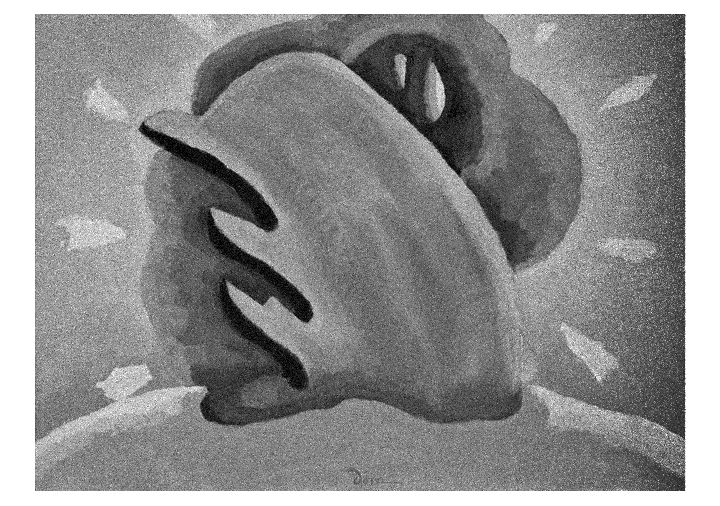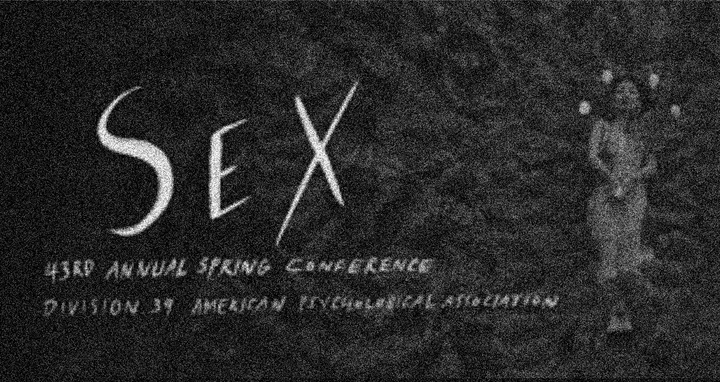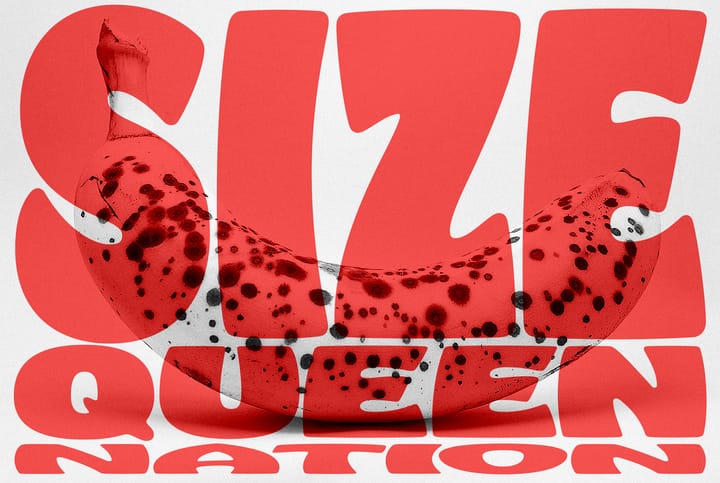The Sex Addiction Rabbit Hole
Sex addiction might be a “myth”, but all myths make sense of the world in some particular way. What does “sex addiction” do for us?

Sex addiction exploded into public consciousness in the early 2010s, when a slew of critical articles were written after the American Psychiatric Association announced that “hypersexual disorder” would be added to its diagnostic manual. Some indications point to a declining phenomenon: several residential sex addiction treatment centers have closed, certifications for sex addiction therapy are down, and it’s certainly faded a bit from the limelight.
But sex addiction has also been absorbed by a broader addiction treatment industry that is worth $42 billion a year and comprised of more than 15,000 treatment centers. Counterintuitively, addiction is the more interesting word in the phrase “sex addiction”, but the broader pathologization of libido within which sex addiction is couched nonetheless makes for an interesting case study in neoliberal society’s decay. How can what Freud thought of as the fundamental drive of human life be conceptualized by some today as a disease? What is the appeal of the paradigm of sex addiction?
The Critic’s View
The story of sex addiction typically begins with Patrick Carnes’s publication of Out of the Shadows: Understanding Sexual Addiction in 1983. With his first book, Carnes—still today the sex addictionologist, founder of the training institute for certified sex addiction therapists (CSATs), owner of the institute’s parent company, husband of its current President, architect of most of the ritzy sex addiction rehab programs around the country—launched a new and quite lucrative industry built on three basic pillars: an irresistible analogy, the patina of scientific authority, and an eager reception in the media.
The analogy, of course, is that sex is like a drug: that one can build a tolerance to it, requiring ever greater “doses”, and leading one to seek an every greater “high”; that one can experience withdrawal symptoms without it; and finally that one can suffer unwanted, destructive consequences in pursuit of it. The scientific authority for these claims is derived from statistics that are, according to the critics, pulled from thin air—Carnes claims that 1 in 12 people is a sex addict—as well as the creation of para-academic journals, training institutes, and certification programs. And the media component needs no real explanation: no paper could resist a story about Anthony Wiener coughing up most people’s annual salary to spend a few weeks in equine therapy for you know what. Beyond the sensationalism, however, sex addiction’s normalization in films like Shame (2011) and Thanks for Sharing (2012) is fairly remarkable: a term that was invented in the 80s now effortlessly serves as the central plot device for a film with Mark Ruffalo and Gwenyth Paltrow.
Sociologist Janice Irvine traces the appeal of the sex addiction paradigm to cultural anxieties around sexuality, feminism, and reckless consumption in the neoliberal era. The 80s saw a conservative backlash to movements for sexual liberation that emerged in the 60s and 70s, and Carnes’s work fit neatly with the ethos of the New Right. Even outside of these circles, however, the AIDS epidemic and a more general wariness of countercultural excess led many to see hypersexuality, if not sexuality itself, as a real problem.
Sex addiction discourse could also appear “progressive” in taking up what some historians call “the new social purity feminism”, the themes of which include “an emphasis on women’s sexual victimization, an identification of sexuality as a powerful, uncontrollably dangerous force, and the moral condemnation of those viewed as sexually impure or incorrect.” Irvine laments that “women who are unaware of the fierce feminist debates about sexuality during the 1980s will not recognize that the feminist approach to sex addiction is solidly located on one side of the sex wars.”
Finally, sex addiction offers one name to concretize the feeling of being drawn to the meaningless hedonism that pervades neoliberal society. Sex addiction provides explanatory relief: for someone feeling like they’re watching too much pornography or chafing against the constraints of monogamy, it helpfully defines the boundaries of an arena of personal struggle. Thus, despite the fact that the science hasn’t supported sexual addiction as a legitimate diagnosis, powerful cultural currents combined with the able messaging of the addictionologists have naturalized sex addiction discourse.
For the moment, the scientific community has kept the sex addictionologists out of their halls. Sex addiction has yet to appear in the Diagnostic and Statistical Manual of Mental Disorders despite well-organized lobbying in its favor. But the fiercest criticisms of sex addiction are not scientifically, but morally based: in short, claim the critics, sex addictionology pathologizes normal sexual behavior, leading those who identify with the diagnosis into a permanent war with an intimate enemy, and not so subtly prioritizes heterosexual, monogamous sexual relationships. They do not deny, of course, that many people, primarily men, by their own accounts have been “helped” by therapeutic treatment for sex addiction. Their criticism is not that sex addiction does not exist but rather that a) the “help” provided by sex addictionologists is more of a religious than a medical variety, and b) that the sex addiction paradigm, with its vague and expansive parameters, lures its subjects into battle with purportedly uncontrollable forces rather than an acceptance of and responsibility for their all-too-human impulses.
Men Are Trash
The critics are probably right that sex addiction is a “myth”, but all myths make sense of the world in some particular way. What does “sex addiction” do for us?
The psychologist David Ley’s The Myth of Sex Addiction, still the definitive refutation of the legitimacy of the concept of sex addiction, offers a helpful point of departure here. According to Ley, it is unquestionably men who are the target of sex addiction discourse; women are included insofar as they possess “high libidos [that] lead them to behave more like men.” Men are more likely to masturbate frequently, to have casual sex, to watch pornography, to objectify their sexual partners (to see them as things and body parts), to desire threesomes and public sex—all, for Carnes and the addictionologists, “risk factors” for sex addiction. For Ley, by contrast, these are ineradicable features of humans with testosterone, and this goes also for transgender men after hormone treatment. Rather than turn what is natural human behavior for roughly half of the species into a disease, he argues, we need to depathologize male sexuality and stand “up in support of masculine eroticism.”
It’s a jarring claim, primarily on account of the fact that it brings together the positive and negative poles of sex addiction criticism. On the one hand, the critics argue that, rather than “repathologiz[ing] forms of erotic behavior that became acceptable in the 1960s and 1970s,” we ought to be expanding the domain of the sexually normal and dispensing with the keywords of the new Puritanism: “shame, inadequacy, anxiety, pain, superficiality, solitariness, damage, malaise, and disorder.” Sex positivity is the order of the day. On the other hand, part of the wariness around sex addiction stems from the notion that it is an exculpating diagnosis, used to “legitimize male sexual behavior, while also sometimes labeling their female partners as enablers.” Harvey Weinstein famously checked himself into rehab for sex addiction shortly after the first allegations against him surfaced.
What’s curious about Ley, in a seeming affront to post-#MeToo liberal axioms, is that he uncomfortably fuses the liberatory and the condemnatory: for him, our society must become more accepting of a plurality of forms of sexual identity, orientation, and expression—and that includes stereotypical male sexuality.
Whatever we think of his conclusion, Ley’s analysis helpfully illuminates the stakes here: for all sides of the debate—the addictionologists, the critics who worry about “legitimizing male behavior,” and Ley himself (a critic, to be sure, but one who wants to legitimize male behavior)—it is male sexuality and the attendant anxieties around its expression that are at issue. The entire debate around sex addiction could be fruitfully boiled down to the question “What are we to do about men?”
Today this question is unavoidably interpreted as pertaining to the disposal of a malignant excrescence. Men, it goes without saying, are trash. A generation ago, the Frankfurt School and Christopher Lasch were concerned with the social and psychological consequences of a “paternalism without fathers”, i.e. the replacement of patriarchal authority by a “new ruling class of administrators, bureaucrats, technicians, and experts” in which actual fathers were absent from the home and relegated to an economic function. Today even this breadwinner status is gone: while “the hours that women (especially mothers) contribute to the labor market have significantly increased,” the economic contributions of American men have declined, as has the marriage rate. The old hard-working and taciturn father, already a resented if respected figure, has given way to the libidinally-overcharged, undependable loser. What indeed are we to do about men!
Sex addiction treatment could thus be seen as a culturally impoverished way of dealing with the contemporary obsolescence of masculinity. It gets headlines when cynically deployed by the rich and famous to excuse the kind of behavior that being rich and famous allows, but even then it diverts attention away from the marker “upper-class” to that of “male.” Everyone today has an eliminable man in their lives; he may not be Harvey Weinstein, but he’s got the same inclinations.
Personal “Growth”
Ley is adamant that the difference between male and female sexuality is not just a matter of “socialization”—it’s all biology to him—but it’s difficult to read his description of the basic features of “masculine eroticism” (again, frequent masturbation, objectification, a lack of intimacy, etc.) and not see a degraded form of sexual expression almost wholly formed by the culture industry, and more specifically by pornography. One of the behaviors that sex addiction seeks to define, one might say, is its own condition of possibility as an intelligible category—but one of the reasons why it’s confusing to include pornography addiction in the broader category of sex addiction. Ley’s biologization of the problem makes for an easy out: testosterone = naturally produced hormone = not pathological. The question is more interesting, and more difficult, when we understand “masculine eroticism” to be embodied by socially invalidated men whose fantasy lives have been intimately shaped by a multi-billion dollar industry hawking an imagined virility.
Pornography dominates American life, “shaping our entertainments, influencing the way we dress and talk, the way we see one another, and the way we behave sexually.” It is mainstream and ubiquitous, so thoroughly absorbed in American culture that it is, according to writers Carmine Sarracino and Kevin Scott, “no longer visible as porn.” In their view, the strange, subjectivity-less, mechanical sexual expression of pornography has been normalized to the point that it is now seen as sexual expression as such.
Sex addictionology is a sometimes explicit but more often veiled means of rejecting this debasement, as well as the powerful and exploitative industry that carries it out. In fact, the same could be said of all of the “behavioral addictions” (shopping, gambling, the internet, etc.): behind the reified and individualizing pseudo-medicalization, it’s not so hard to see broad dissatisfaction with American culture, however misguidedly expressed—a refusal of the alienating cultural gruel served by neoliberal society, not so different from reaching for a bottle of Dexamyl in the Fordist era.
A failure to grapple with this refusal is the key fault of the critics of sex addictionology, who typically appear comfortably at home in what the philosopher Byung-Chul Han calls contemporary society’s “positivity of Can.” For Han, we are called today to be uninhibited in every way, to break prohibitions and seek enjoyment and free expression (“Yes we can!”), provided of course we accept the homogenized products of consumer culture and the attendant alienation. For good reason he concludes that the positivity of Can leads not to acceptance, tolerance, and “sexual healing” (Ley’s invocation), but rather to depression, paralysis, and exhaustion.
From this angle, the explanatory relief provided by the sex addiction diagnosis is not simply regression to a “safe” conservatism; it is also a defense against the depressive abyss of the contemporary culture of affirmation, and thus a genuine if tragically confused protest against the status quo. Sex addiction gives one limits and coordinates for personal struggle and transformation that constitute an imposed self-isolation from dominant cultural imperatives—“If only I can overcome my sex addiction…”—and in so doing staves off the potential for the psychic freefall that life in neoliberal society threatens.
A stunning example of this claustral emplotment is the three-part documentary “Brain, Heart, World” produced by Fight the New Drug, an anti-pornography organization that claims to be “non-religious and non-legislative” but is based in Utah and founded by Mormons. The first part of the documentary reviews the neuroscience behind porn addiction, complete with gelatinous brain models indicating the “regions responsible for porn processing”; the second concerns the damaging effects of pornography on love, conceptualized in the terms of a romantic comedy (the last words of the trailer are “It is possible to experience real love”); and the third demonstrates the links between pornography, sex trafficking, and sexual violence more broadly.
In this documentary, sexual impulses have almost nothing to do with human subjectivity: they are unwanted bodily compulsions that corrupt love and cause evil. In one sense, we know this story well, and the fact that Mormons are behind it makes it pretty easy to stereotype. But our critical impulses easily betray us into affirming the dumpster fire of contemporary society, and thus not accounting for the source of the appeal of such a degraded vision for personal growth.
UnSAFE
As a note of historical specificity to conclude this discussion, it’s possible that the sex addiction diagnosis was simply born prematurely, with unfinished features and for a world that wasn’t ready for it. It’s pretty easy to parody the formula by which Carnes divines signs of compulsive sexuality—Secret, Abusive, used to avoid Feelings, and Empty (SAFE)—and it’s notable that only 6% of men in a survey of 100,000 thought that sex addiction diagnosis was legitimate. But the cultural acclimation to sex addiction discourse proceeded before the terms were set. The work of Gary Wilson and others indicates that free and easily accessible tube porn websites are to porn magazines what shooting heroin is to eating opium. It’s best to be skeptical of drug hysteria, while taking seriously the conditions that give rise to it.
■
Benjamin Y. Fong is the author of Quick Fixes: Drugs in America from Prohibition to the 21st Century Binge (Verso, 2023).



